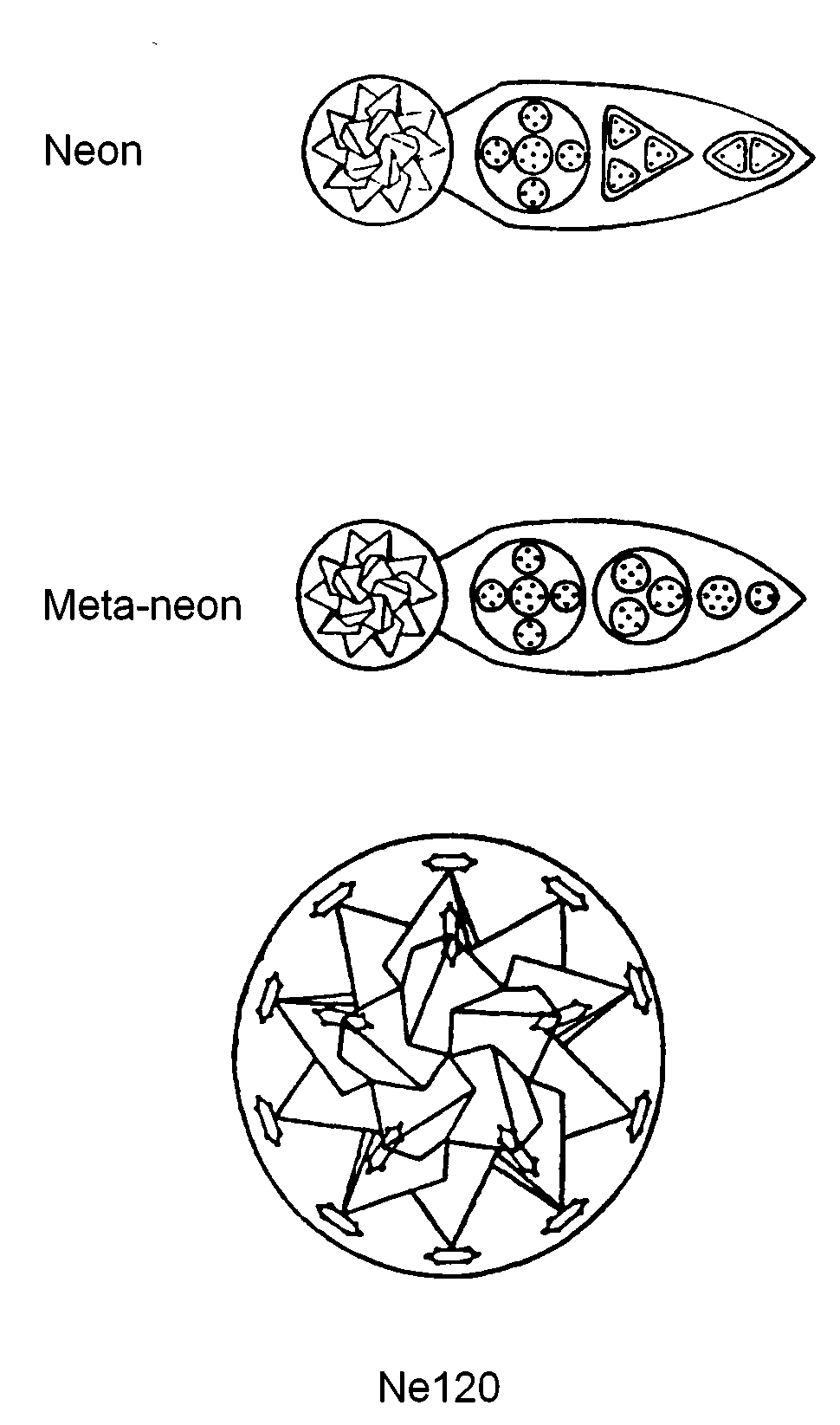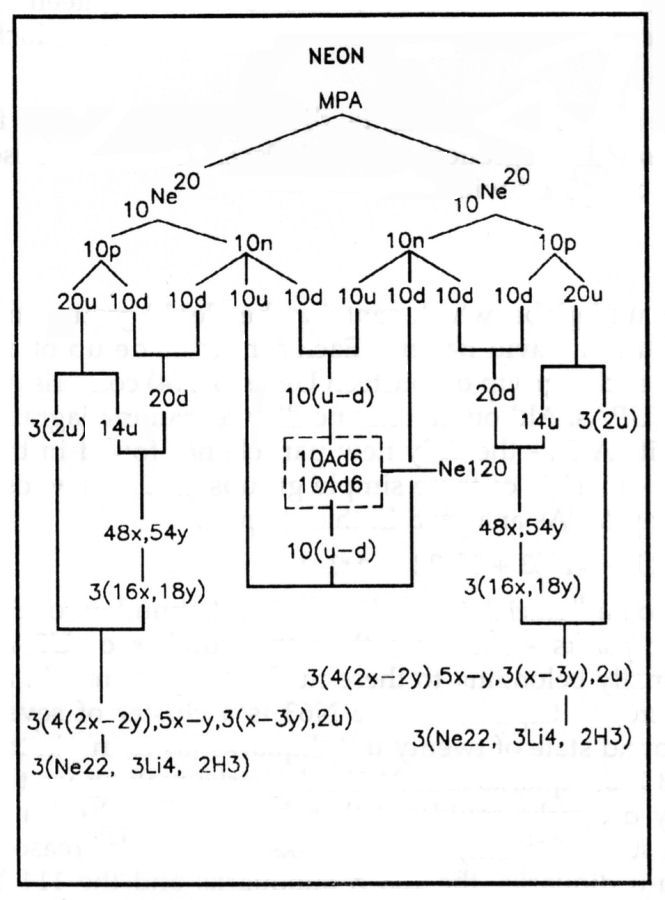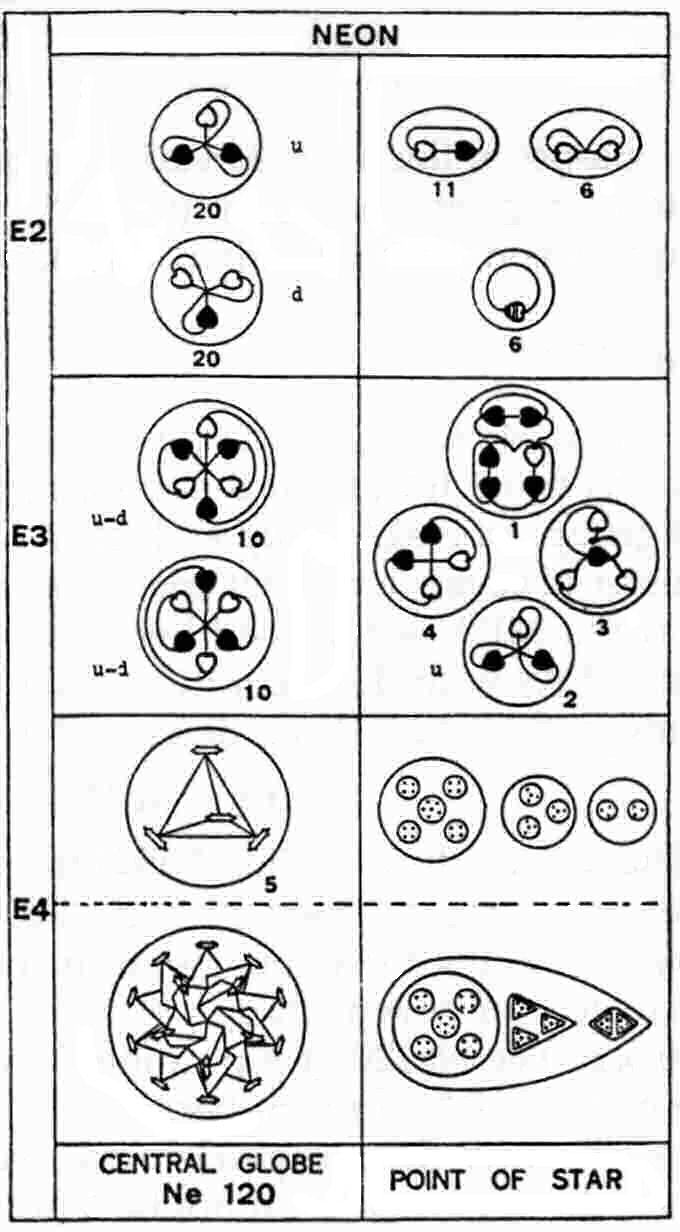
The Neon MPA
The neon MPA is a flat, six-armed star. All the arms contain the same set of particles and
radiate from a central sphere (Ne120), which contains twenty cigar-shaped Ad6 groups, each of six UPAs, located at
the twenty corners of a dodecahedron. They form five 
intersecting, tetrahedral clusters of four Ad6 groups, each cluster being an Ad24 group similar to those present in the MPAs of deuterium("Adyarium") and helium-4. Each arm contains three bodies: a pair of hydrogen triplets (H3) at the end of the arm, a set of three Li4 groups and a sphere containing five spheres (Ne22), four of which enclose quartets of UPAs and surround the central one containing six UPAs. The third diagram shows the central Ne120 group and the particles in one arm.
Neon MPA = Ne120 + 6[Ne22 + (3Li4) + (2H3)].
The MPA is formed from two Ne20 nuclei, which provide 360 subquarks — the same as the number of UPAs. Ten u quarks and ten d quarks making up either the ten neutrons or the ten protons in each nucleus (the former is assumed for the sake of analysis) combine in pairs to form twenty u-d diquarks (Ad6). The Ne120 group is a bound state of twenty u-d diquarks, each of charge +1/3, which minimize their Coulomb interaction energy by maximizing their mutual separation. The regular polyhedron that allows this is a dodecahedron with twenty vertices equally spaced apart. The Ne120 group is the central core of all other inert


gas MPAs and it is found also in the MPAs of titanium, zirconium, tin, lanthanum, gadolinium, terbium and dysprosium. Its frequent presence in MPAs indicates that this bound state has great stability, as is confirmed by the fact that it never appeared broken up or otherwise modified by interaction with other particles in the MPA. The Ne120 group can be regarded as the quark counterpart of the especially stable, closed shell structure of the doubly magic Ca40 nucleus, the twenty u quarks corresponding to the twenty protons in the latter and the twenty d quarks corresponding to its twenty neutrons.
The disintegration diagram confirms that there are twenty u quarks and twenty d quarks in the Ne120 because it breaks up at the E2 stage into twenty (+) triplets (u quarks) and twenty (−) triplets (d quarks). The two H3 triplets in an arm are u quarks, The disintegration diagram confirms this by indicating that they are both (+) triplets. In agreement with their composition predicted in the analysis of the lithium MPA, the Li4 groups consist of X-3Y bound states. It is not clear whether the six free UPAs indicated at stage E2 come from the two triplets, the bound state of six UPAs or from both. The foremost is consistent with the eleven (0) duads shown at stage E2 being released from the four quartets (2X-2Y) and the three Li4 groups (X-3Y):
4(2X-2Y) + 3(X-3Y) → 11(X-Y) + 3(Y-Y).
However, an arm (the "point of star" in the disintegration diagram) cannot break up into the eleven (0) duads (X-Y), six (−) duads (Y-Y) and six UPAs shown there because this would imply that it contains at least twenty-three Y subquarks, whereas theory allows only eighteen Y subquarks. The first edition of Occult Chemistry has no disintegration diagram for neon which might confirm or invalidate this prediction of an error of observation in the break-up of the three Li4 groups by Annie Besant, who specialized in studying the products of disintegration of groups of UPAs. Clearly, however, it is quite plausible that she could have miscounted the numbers of (0) and (−) duads.